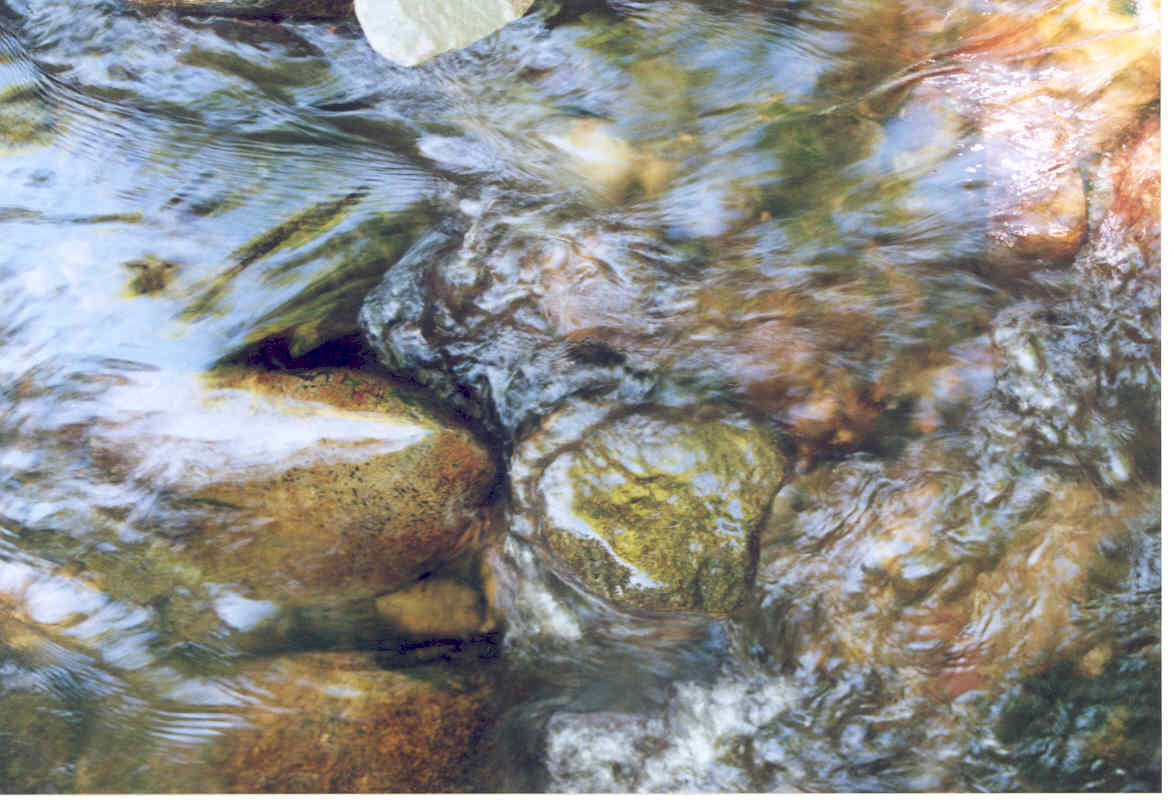Life expressed in water.
Our world and everything in it including ourselves has been shaped by water. Yet how much do we understand it. Left to itself, water approximates to a sphere, circular currents bounded by surface tension, but when subjected to gravity, then the circular forces in the water turn the flow into a spiral form (or two spirals in one), bending it from side to side and creating meanders in rivers as silt is taken from the outside off the curve and deposited on the inside of the next bend. The same spiral arrangement also exists where water from different sources come together – the warm waters of the gulf stream spiral around the colder currents, the clear Rio Negro and the muddy Amazonas spiral adjacent to each other for scores of miles after they merge above Manaus.
Add an external force like dropping a pebble in a bowl and water will adopt a natural frequency of vibration depending on the configuration of the container. Vibration may also be imposed by wind or obstructions to flow, creating ripples, that can be recorded on sand and rocks. The gravitational effect of the moon exaggerates natural rhythm of water around the globe.
Waves in open water are created by the wind on the surface or a rising sea bed close to the shore. Although the wave moves, the water in it just circulates. Rays and other fish swim like a wave through the static circulating water. The wave ‘breaks’ when wind accelerates the top and causes it to overbalance or when the rising shore line slows down the base. This creates a horizontal air/water vortex that churns and oxygenates the water.
In contrast, the standing wave generated by the fall of water in a weir is static and water flows through it. So the wave is a feature of water, but does not necessarily relate to its flow.
An obstruction in a river or the flow of a stream of water into a static pool, creates vertical vortices; paired boundary areas where fluids of different pressures coalesce and mix.
Multiple sources, sinks and currents combine to create more complex fluid structures that has been compared to a symphony in which different instruments have their own entries and rests and are brought together by an invisible conductor. Flow must be turbulent for exchange to occur. If it is channelled through a straight pipe, or settles at the bottom of a deep pool, it cannot form vortices, transfer of material cannot occur and water stagnates .
Water is a complex, sensitive medium that can respond to the environment to create a multiplicity of forms. Living creatures start their live as suspensions of cells in water. They must therefore be influenced by flow patterns of the medium of suspension and develop out of these patterns So simple multi cellular organisms living in water often adopt spiral forms. Snails have a spiral shell. The muscle fibres of the heart adopt a spiral arrangement with compartments forming at the junction of different flows (oxygenated blood from the lungs and deoxygenated blood from the rest of the body). Movements of fluid are incredibly sensitive; they respond to minor change. Nerve cells seem to line up at the boundary zones where the effects of those changes have most effect.
Now if we imagine that the world and everything in it was initially composed of fluids initially, then we can see how solid forms in nature conform to a vortex configuration. Vortices are consolidated in rocks when they cool. Jellyfish are 96% water and resemble complex vortices. When their mantle contracts, they produce mirror images of themselves in the vortices they leave behind. And look at other vortex forms, the cochlea of the ear, the semicircular canals, which in the lamprey are still fluid vortices, the turbinate bones of the deer, the intestine of the lungfish is spiral in form, the intestine of the cow circular. Even the embryo starts off as a complex vortex of cells, whirling boundaries where things occur, cells are laid down, nervous connections are created. We might even envisage organs being created out of paired vortices).
Water cannot just be understood by its chemical properties. It is the stuff of life, the circulation that runs through all living things. Sensitive Chaos; creation of flowing forms in water and air was written by Theodore Schwenk (1910- 1986), anthroposophist, engineer and director of The Institute of Water Research and Flow Science in the Black Forest. It is a remarkable, thought provoking book that escapes the stagnation of research protocols and methodology and allows the imagination to flow unimpeded; the sort of book that makes us reflect on what might be so. That, surely, is the essence of science.



